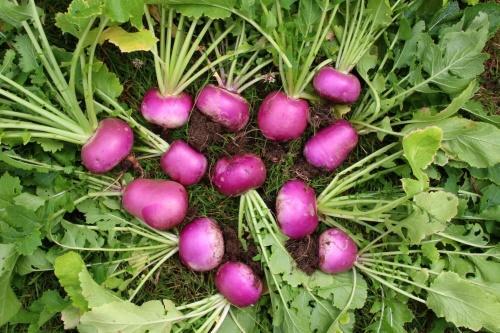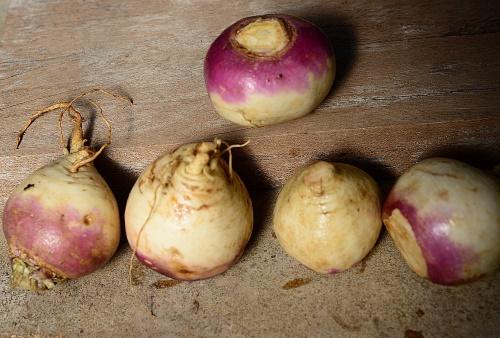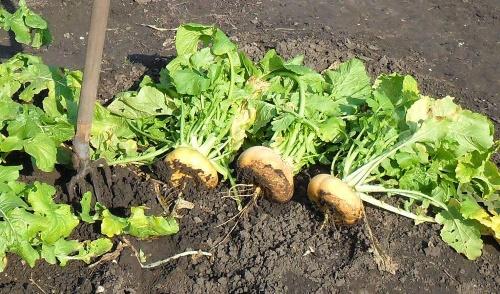Fodder turnips will successfully replace fodder beets
 Forage crops are no less in demand than salad crops, especially if the farm has animals. For example, feed turnip is a good addition to their diet. The above-ground green part will replace the grass in the summer, and the succulent roots will serve as a vitamin supplement for the cattle in the winter. Given the high frost resistance of the plant, it can be grown in almost any region. In addition, unlike fodder beets, turnips are less demanding on the soil.
Forage crops are no less in demand than salad crops, especially if the farm has animals. For example, feed turnip is a good addition to their diet. The above-ground green part will replace the grass in the summer, and the succulent roots will serve as a vitamin supplement for the cattle in the winter. Given the high frost resistance of the plant, it can be grown in almost any region. In addition, unlike fodder beets, turnips are less demanding on the soil.
Characteristic features of culture

By the fall, large roots ripen, and they are easy to harvest - almost half of the turnip rises above the soil. Depending on the variety, the shape of the fruit can be different - cylindrical, round or oval. The same applies to color: there are white, yellow and even purple varieties. The pulp is colored the same color as the underground part of the turnip.
Forage turnip blooms in the second year, forming racemose yellow inflorescences. Turnips can be harvested in the year of planting, but to obtain planting material (seeds), the plants are left in the beds. Rounded brownish seeds ripen in pods.
Turnip is one of the fastest growing forage crops. The growing season is 80 to 100 days.
Feed turnips: cultivation techniques
 You can plant turnips in spring, late April, or early July. Lettuce varieties are often grown through seedlings, which allows harvesting even earlier. In the open field, seeds germinate at 2 ° C, seedlings are not afraid of frosts down to minus 4 °. Biennial plants can withstand temperatures down to minus 7 ° C without damage.
You can plant turnips in spring, late April, or early July. Lettuce varieties are often grown through seedlings, which allows harvesting even earlier. In the open field, seeds germinate at 2 ° C, seedlings are not afraid of frosts down to minus 4 °. Biennial plants can withstand temperatures down to minus 7 ° C without damage.
Since the seeds are very small, it is advisable to mix them with sand. This will help avoid excessive thickening of crops.
The fodder turnip is not demanding for the soil, but it will give larger root crops on loams and sod-podzolic peatlands. It grows best in lighted areas, but can bear fruit in light partial shade. But the plant has a special attitude to moisture - it requires a lot of it. Otherwise, the fruits will be small, not juicy and fibrous.
Turnip care is no different than growing beets or carrots:
- The beds need to be weeded and loosened regularly.
- In dry summer - watering is required.
- To avoid thickening, crops should be thinned 2-3 times.
- On poor soil, turnips can be fed twice by spilling mullein infusion or chicken droppings... In the middle of summer, it does not hurt to add another top dressing in the form of superphosphate to increase the sugar content in the fruits.
You can start harvesting root crops when the lower part of the plants withers and turns yellow. In spring sown turnips, this occurs at the end of June.The turnip planted in June for winter storage is dug up in early autumn. The main thing is not to allow it to freeze, otherwise the turnip will become lethargic and will not lie.